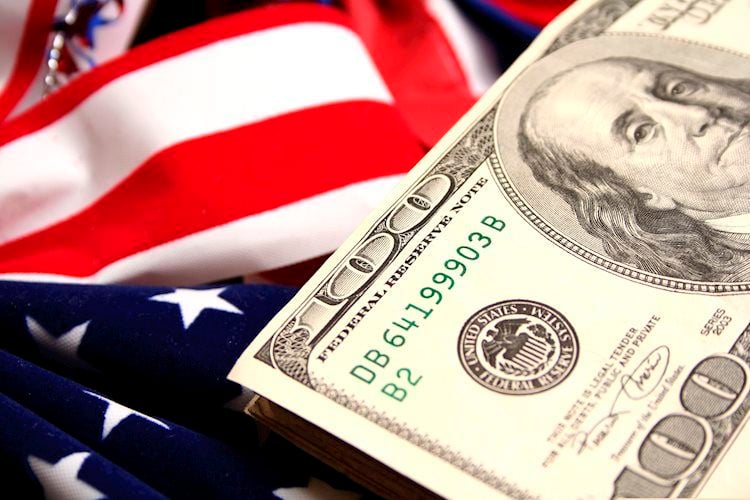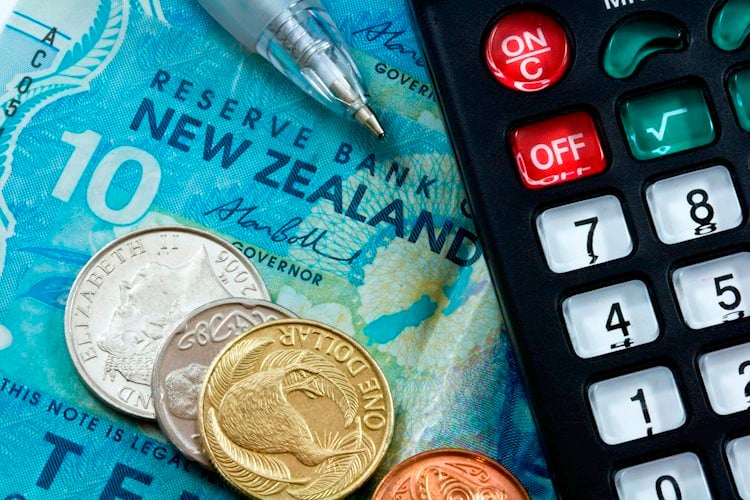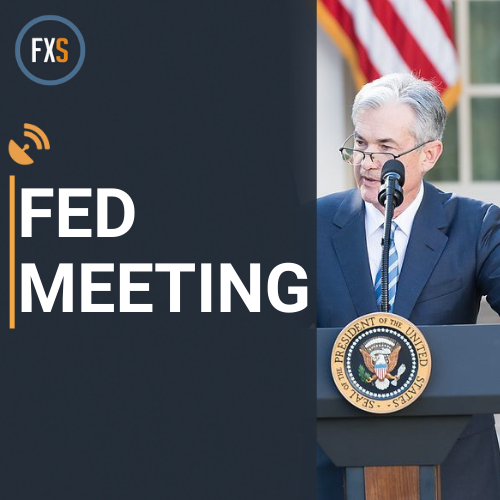Initial Jobless Claims data came out slightly lower than expected.
Fed’s stance remains hawkish, persistently increasing pressure on US yields.
The US Dollar Index (DXY) rose toward 106.25 on Thursday and appears on track to test the November 1 high near 107.10. What is underpinning this rise is the Federal Reserve’s (Fed) hawkish stance, along with a related recovery of US Treasury yields. Low Jobless Claims also benefited the US Dollar.
The US economy remains resilient, showing stubborn inflation and a strong economy. This has made the Fed adopt more hawkish messaging, and markets are delaying the start of the easing cycle.
Fed remains committed to a hawkish stance, given ongoing inflation and robust growth in the US.
Fed officials on Thursday spoke cautiously, asking for patience in regard to interest rate cuts.
Market forecasts for the Fed’s upcoming meeting showed an important shift and the chances for a rate cut in June have plunged to 20%, while the possibility for a rate cut in July dropped to 50%. Current estimates suggest a likely first cut in September with a 75% probability of a second one in December.
The US Treasury bond yields show an upward trend for the 2-year, 5-year, and 10-year bonds, currently at 4.98%, 4.68% and 4.64%, respectively.
On the data front, weekly Jobless Claims came in at 212K, lower than the 215K expected, adding arguments for a strong labor market.
The indicators on the daily chart reflect a positive bias for DXY. The Relative Strength Index (RSI) has a positive slope, sitting comfortably in positive territory. This implies an underlying bullish momentum. Complementing this bullish bias is the Moving Average Convergence Divergence (MACD), which shows rising green bars, contributing to the overall buying sentiment.
As for the Simple Moving Averages (SMAs), the DXY pair remains above the 20, 100, and 200-day SMAs, inferring that buying momentum is strong. Adding to this bullish scenario is the ongoing resilience of the bulls, further grounding positive sentiment.
The US Dollar (USD) is the official currency of the United States of America, and the ‘de facto’ currency of a significant number of other countries where it is found in circulation alongside local notes. It is the most heavily traded currency in the world, accounting for over 88% of all global foreign exchange turnover, or an average of $6.6 trillion in transactions per day, according to data from 2022. Following the second world war, the USD took over from the British Pound as the world’s reserve currency. For most of its history, the US Dollar was backed by Gold, until the Bretton Woods Agreement in 1971 when the Gold Standard went away.
The most important single factor impacting on the value of the US Dollar is monetary policy, which is shaped by the Federal Reserve (Fed). The Fed has two mandates: to achieve price stability (control inflation) and foster full employment. Its primary tool to achieve these two goals is by adjusting interest rates. When prices are rising too quickly and inflation is above the Fed’s 2% target, the Fed will raise rates, which helps the USD value. When inflation falls below 2% or the Unemployment Rate is too high, the Fed may lower interest rates, which weighs on the Greenback.
In extreme situations, the Federal Reserve can also print more Dollars and enact quantitative easing (QE). QE is the process by which the Fed substantially increases the flow of credit in a stuck financial system. It is a non-standard policy measure used when credit has dried up because banks will not lend to each other (out of the fear of counterparty default). It is a last resort when simply lowering interest rates is unlikely to achieve the necessary result. It was the Fed’s weapon of choice to combat the credit crunch that occurred during the Great Financial Crisis in 2008. It involves the Fed printing more Dollars and using them to buy US government bonds predominantly from financial institutions. QE usually leads to a weaker US Dollar.
Quantitative tightening (QT) is the reverse process whereby the Federal Reserve stops buying bonds from financial institutions and does not reinvest the principal from the bonds it holds maturing in new purchases. It is usually positive for the US Dollar.
Share:
Feed news
Information on these pages contains forward-looking statements that involve risks and uncertainties. Markets and instruments profiled on this page are for informational purposes only and should not in any way come across as a recommendation to buy or sell in these assets. You should do your own thorough research before making any investment decisions. FXStreet does not in any way guarantee that this information is free from mistakes, errors, or material misstatements. It also does not guarantee that this information is of a timely nature. Investing in Open Markets involves a great deal of risk, including the loss of all or a portion of your investment, as well as emotional distress. All risks, losses and costs associated with investing, including total loss of principal, are your responsibility. The views and opinions expressed in this article are those of the authors and do not necessarily reflect the official policy or position of FXStreet nor its advertisers. The author will not be held responsible for information that is found at the end of links posted on this page.
If not otherwise explicitly mentioned in the body of the article, at the time of writing, the author has no position in any stock mentioned in this article and no business relationship with any company mentioned. The author has not received compensation for writing this article, other than from FXStreet.
FXStreet and the author do not provide personalized recommendations. The author makes no representations as to the accuracy, completeness, or suitability of this information. FXStreet and the author will not be liable for any errors, omissions or any losses, injuries or damages arising from this information and its display or use. Errors and omissions excepted.
The author and FXStreet are not registered investment advisors and nothing in this article is intended to be investment advice.




